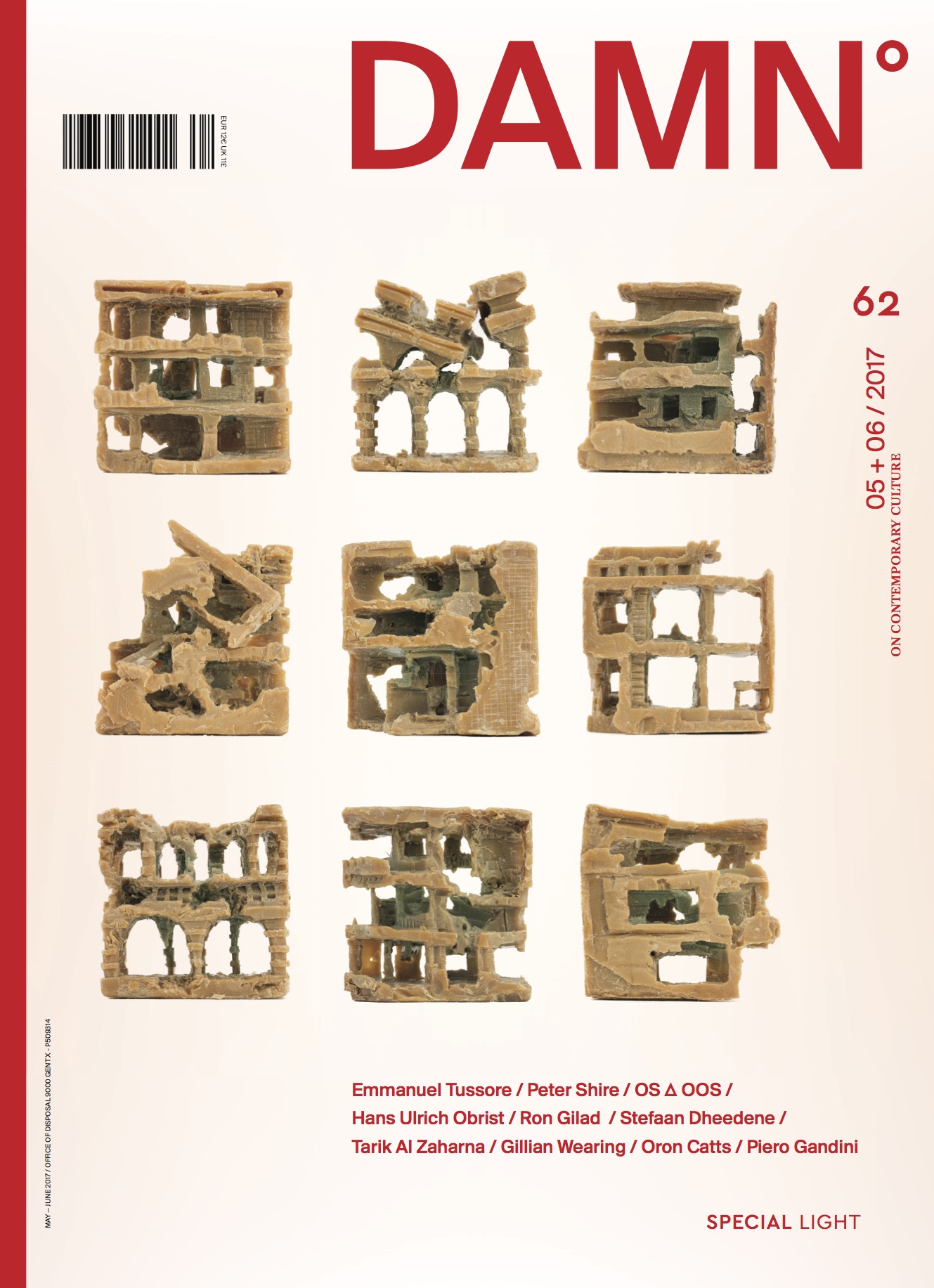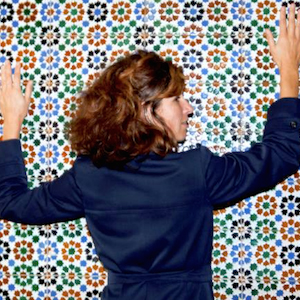Perhaps Tarik Al Zaharna could have made life simpler for himself. Born in Saudi Arabia into a Palestinian family, he grew up in Luxembourg, and from adolescence onwards he trained in Lebanon, the UK, and Germany before working in New York (Urban A&O) and Münster (Bolles+Wilson). Then in 2008, Al Zaharna decided to move to Dubai, setting up a second architectural practice there in 2015. He has embarked on what could be called the humble beginnings of an alternative architectural direction, with sustainability, local culture, ecology, and personal wellbeing as the main ingredients. This takes some doing in a context where money speaks loudest and where size matters most – at least that is what the clichés tell us.
Dubai is known as one of the world’s fastest growing economies, being the undisputed shopping capital of the Middle East, the city with the tallest skyscrapers (at 828 metres high, Burj Khalifa is the most impressive), and home to the super rich with their lifestyle of soulless luxury and showing off. Meanwhile, the report on the United Arab Emirates by Human Rights Watch doesn’t read like a fairy tale for many women, immigrant workers, and other outcasts. However, with the Dubai Design District, the city has been attempting to establish itself on the international map in design, art, and architecture for the last couple of years. Many contemporary entrepreneurs understand that a new, forward-thinking generation has different desires.
 This is why Al Zaharna cautiously, but with great openness of mind, is set on reinventing architecture in Dubai. The little boy who used to build tree houses in the Luxembourg forest experienced a strange sensation when as a young architect he first touched down in Dubai. “Something clicked in my head. This was a city I couldn’t read, I couldn’t figure out. It felt familiar but at the same time quite foreign. Averse to the clichés, I felt something for this very multicultural and dynamic city, with its international influences, its long history as a trade-hub between East and West. I enjoyed the large scale architecture, synonymous with what you find in any Western city. But I also discovered a nomadic, semi-transient culture where things are very much on the move, which translates into a mentality quite different from that of the West, where architects build for eternity.” Al Zaharna decided to stay; to found T.ZED Architects and start to explore what the region is really about. The latter is crucial, since he approaches architecture as a craft that responds to context. “I’ve always been aware of the built environment and of the impact that spaces and buildings have on our personal wellbeing. I consider architecture a failure if it forgets that buildings are being used by humans.”
This is why Al Zaharna cautiously, but with great openness of mind, is set on reinventing architecture in Dubai. The little boy who used to build tree houses in the Luxembourg forest experienced a strange sensation when as a young architect he first touched down in Dubai. “Something clicked in my head. This was a city I couldn’t read, I couldn’t figure out. It felt familiar but at the same time quite foreign. Averse to the clichés, I felt something for this very multicultural and dynamic city, with its international influences, its long history as a trade-hub between East and West. I enjoyed the large scale architecture, synonymous with what you find in any Western city. But I also discovered a nomadic, semi-transient culture where things are very much on the move, which translates into a mentality quite different from that of the West, where architects build for eternity.” Al Zaharna decided to stay; to found T.ZED Architects and start to explore what the region is really about. The latter is crucial, since he approaches architecture as a craft that responds to context. “I’ve always been aware of the built environment and of the impact that spaces and buildings have on our personal wellbeing. I consider architecture a failure if it forgets that buildings are being used by humans.”
With this in mind, T.ZED Architects’ newest project, KOA Canvas, must be what Al Zaharna has always dreamed of. Designed for KOA Real Estate, a company founded by young entrepreneur Mohammed Bin Zaal, Canvas is a property with 71 apartments – of which 42 have a completely different lay-out – and a co-working space, aiming to bring together regional entrepreneurs, talented creatives, and business people in an “inspiring, supportive, state-of-the-art communal facility that will become a hub for the kind of new ideas, productivity, and creativity that will drive the UAE forward”, according to KOA. “The brief was to create a place where people can feel at home, that they can customise and grow into”, Al Zaharna explains. “We wanted to contextualise the project by using local, natural materials – like oak and Grey Quartzite stone. And, in collaboration with landscape architect Kamelia Zaal, we created sky-gardens with a majority of indigenous plants, which is unheard of here. Climate, surroundings, levels of privacy and – at the same time – openness, were major drives. As was creating a sort of blank canvas so that residents could really develop their own identity and live in a place that feels like what they would design for themselves. Equally important is that it’s reasonably priced – often creatives can’t afford these types of settlements, but KOA makes sure they can.” Constructing in a hot, humid, desert climate with an excessive amount of burning sunshine is a challenge for all architects in the region. Especially if you want to keep everything brand new and super expensive-looking all the time. However, T.ZED Architects chose another direction: “We usually shut ourselves off from the elements, but I wanted to re-establish that connection. I wanted to show the ageing of natural materials.” Quite a statement in Dubai.
 Just like T.ZED Architects, KOA wants to give added value to how people live together in the city and improve the quality of life for individual UAE residents; to “redefine what urban communities mean in the region, with spaces that are designed to enhance work, rest, and play”. With the Canvas project, T.ZED Architects and KOA share a long-term vision. Thus, they are part of a new and dynamic architectural movement, away from the concept of always bigger, always more expensive, and always more exclusive. “Dubai’s architectural identity is taking shape” Al Zaharna nods, “within the context of the climate, history, and local craftsmanship. These elements should be major influences in what is produced, more so than technology. In our practice, we try to tap into the cultural significance of the region and to make architecture that highlights all the different components. Our aim is to set a precedent, to show how developers and architects should design and build such that the architecture is identifiable as regional as well as contemporary. I believe that one day there will be a Middle Eastern architectural language that reflects the regional way of thinking and living. Look at what happened with Japanese architecture, where wabi-sabi, the beauty of imperfection and of something that is incomplete, is now its signature style. Likewise, T.ZED Architects does everything to help the Middle East create a signature.” There’s a long process ahead, then? “In Dubai things go fast...”
Just like T.ZED Architects, KOA wants to give added value to how people live together in the city and improve the quality of life for individual UAE residents; to “redefine what urban communities mean in the region, with spaces that are designed to enhance work, rest, and play”. With the Canvas project, T.ZED Architects and KOA share a long-term vision. Thus, they are part of a new and dynamic architectural movement, away from the concept of always bigger, always more expensive, and always more exclusive. “Dubai’s architectural identity is taking shape” Al Zaharna nods, “within the context of the climate, history, and local craftsmanship. These elements should be major influences in what is produced, more so than technology. In our practice, we try to tap into the cultural significance of the region and to make architecture that highlights all the different components. Our aim is to set a precedent, to show how developers and architects should design and build such that the architecture is identifiable as regional as well as contemporary. I believe that one day there will be a Middle Eastern architectural language that reflects the regional way of thinking and living. Look at what happened with Japanese architecture, where wabi-sabi, the beauty of imperfection and of something that is incomplete, is now its signature style. Likewise, T.ZED Architects does everything to help the Middle East create a signature.” There’s a long process ahead, then? “In Dubai things go fast...”

 Tarik Al Zaharna visited DAMN in Palazzo Litta during last Milan Design Week, sharing his knowledge about innovative and dynamic Middle Eastern contemporary architecture. Watch the video here.
Tarik Al Zaharna visited DAMN in Palazzo Litta during last Milan Design Week, sharing his knowledge about innovative and dynamic Middle Eastern contemporary architecture. Watch the video here.
Dubai is known as one of the world’s fastest growing economies, being the undisputed shopping capital of the Middle East, the city with the tallest skyscrapers (at 828 metres high, Burj Khalifa is the most impressive), and home to the super rich with their lifestyle of soulless luxury and showing off. Meanwhile, the report on the United Arab Emirates by Human Rights Watch doesn’t read like a fairy tale for many women, immigrant workers, and other outcasts. However, with the Dubai Design District, the city has been attempting to establish itself on the international map in design, art, and architecture for the last couple of years. Many contemporary entrepreneurs understand that a new, forward-thinking generation has different desires.

KOA Canvas, Dubai. Sales Office
With this in mind, T.ZED Architects’ newest project, KOA Canvas, must be what Al Zaharna has always dreamed of. Designed for KOA Real Estate, a company founded by young entrepreneur Mohammed Bin Zaal, Canvas is a property with 71 apartments – of which 42 have a completely different lay-out – and a co-working space, aiming to bring together regional entrepreneurs, talented creatives, and business people in an “inspiring, supportive, state-of-the-art communal facility that will become a hub for the kind of new ideas, productivity, and creativity that will drive the UAE forward”, according to KOA. “The brief was to create a place where people can feel at home, that they can customise and grow into”, Al Zaharna explains. “We wanted to contextualise the project by using local, natural materials – like oak and Grey Quartzite stone. And, in collaboration with landscape architect Kamelia Zaal, we created sky-gardens with a majority of indigenous plants, which is unheard of here. Climate, surroundings, levels of privacy and – at the same time – openness, were major drives. As was creating a sort of blank canvas so that residents could really develop their own identity and live in a place that feels like what they would design for themselves. Equally important is that it’s reasonably priced – often creatives can’t afford these types of settlements, but KOA makes sure they can.” Constructing in a hot, humid, desert climate with an excessive amount of burning sunshine is a challenge for all architects in the region. Especially if you want to keep everything brand new and super expensive-looking all the time. However, T.ZED Architects chose another direction: “We usually shut ourselves off from the elements, but I wanted to re-establish that connection. I wanted to show the ageing of natural materials.” Quite a statement in Dubai.

KOA Canvas project, Dubai. Mixed-use development for KOA Real Estate

KOA Canvas, Dubai. Interior view

KOA Canvas, Dubai Interior view
 The Cocoon, Installation created for Dubai Design Week 2016
The Cocoon, Installation created for Dubai Design Week 2016
 ORA Japanase Restaurant, Kuwait
ORA Japanase Restaurant, Kuwait



